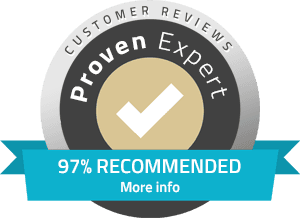On-page SEO factors are used to optimize different elements on a page, increasing the search engine ranking, user experience, and organic traffic. The major on-page SEO factors are as follows:
1. Keyword Research:
It includes thorough keyword research to bring in the most relevant keywords with high performance for your content. Tools such as Google Keyword Planner, Ahrefs, and Semrush help.
Keyword Use: In title tags, meta descriptions, headings, URL slugs, and body copy, use keywords in an organic manner. Do not stuff keywords.
2. Title Tags
Catchy Titles: The title tag is unique, descriptive, and catchy for each page and contains primary keywords. Make sure the title tag is fewer than 60 characters so it can display entirely in search results.
3. Meta Descriptions
Informational descriptions: Be as brief as possible while keeping the meta description informational. Ensure the description encapsulates the information contained in the page while providing key words relevant to the description. This makes it range between 150-160 characters to fit completely in search results.
4. Headings (H1, H2, H3, etc.)
Structured Content: Organize content logically with the help of headings. The primary keyword should be used in the H1 tag, and the title should correctly reflect the topic of the page. H2 and H3 tags can be used for subheadings to structure and make content readable.
5. URL Structure
Clean URLs: Create clean, descriptive, and keyword-rich URLs. Avoid using large numbers and special characters. One should use small, meaningful URLs.
6. Quality and Relevance of Content
Quality Content: Quality content can be informative, and appealing as well as to the users as good. Content will also need to be new, well-researched, and a comprehensive one
Content Updates: Update your content regularly so it does not age. Outdated content can spoil the user experience and rankings too.
7. Internal Linking
Strategic Links: Internal linking links related stuff on your site, distributes link equity, makes navigation of the site easier, and makes users stay longer
Anchor Text: Use descriptive, relevant anchor text on internal links for users and search engines’ context.
8. Mobile Optimization
Responsive Design: Ensure that your website is mobile-friendly and provides a seamless experience to your users on all devices. Google’s mobile-first indexing gives preference to mobile-optimized websites on search results.
Mobile Usability: Use Google’s Mobile-Friendly Test tool to check mobile usability, and fix the problems found.
9. Page Speed
Fast Loading Times: Improve faster loading times. Use tools like Google PageSpeed Insights to identify those problems slowing your site down.
Image Optimization: Compress and optimize images without losing quality to reduce the load time. Modern formats such as WebP.
10. UX
Easy Navigation: Your website should be easily navigable. Information from any point on your website should not be more than two or three clicks away.
Engaging Design: Your design should be engaging enough to keep attention, which minimizes the bounce rate further.
11. Content Accessibility
Alt Text for Images: Use alt text that will describe all images to ensure accessibility and the ability of search engines to interpret the content of the images.
Readable Fonts and Colors: All the fonts and colors on your website should be readable to users.
12. Schema Markup
Structured Data: This is the schema markup which gives the context to search engines to better understand the content. It leads to better chances of being included in rich snippets and enhanced search results.
13. Social Sharing
Share Buttons: Social sharing buttons at the bottom of the content can push more users to share your content on various social networking sites. This generates visibility and attracts traffic.
14. HTTPS – Secure Website
HTTPS SSL Certificate Install an SSL certificate on your website to make it HTTPS. A ranking factor also, it generates trust among visitors by protecting them from data being stolen.
15. Bounce Rate and Dwell Time
Engaging Content Keeping the visitors on your page for a longer duration. Also, create engaging content.
Multimedia Content: Using images, videos, infographics to make them engaged.
Clearly Defined Calls-to-Action: Clear and Compelling calls-to-action (CTAs) guide users toward desired actions which increase dwell time and reduce bounce rates.



